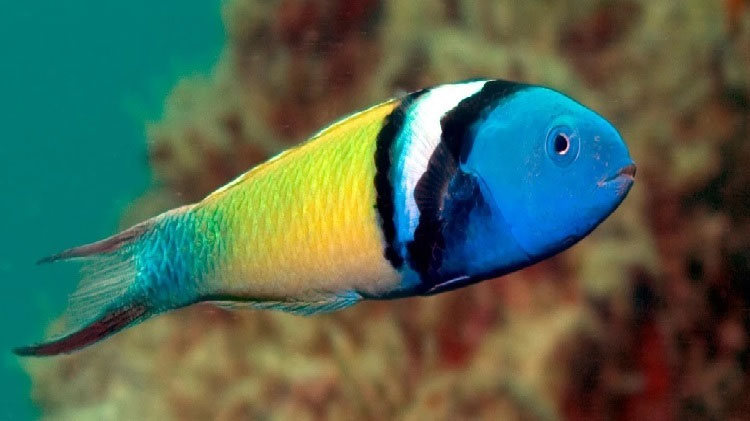Scientists explain the phenomenon of sex change in fish
More than 500 species of fish capable of changing sex are often in response to the surrounding environment.
Scientists at the University of New Zealand, La Trobe University and Professor Jenny Graves for the first time discovered the gender change secrets in fish . The study is published in Science Advances magazine.

Blue-headed arowanas can change their sex.(Photo: Sea-animal).
Professor Jenny Graves, a member of the science group, said he has been tracking the bluehead wrasse for many years because the gender change is happening very quickly. If the male in the herd leaves, the largest female will replace the male in just 10 days. It changes its behavior in minutes, colors in a few hours. Reproductive organs also gradually turned to males after only 10 days.
Researching on this issue, scientists use the latest genetic analysis methods - RNA sequence analysis and epigenetic genetics, from which to discover when, how fish genome start sex change. How the environment affects this transformation process.
The results of the study show that gender change is related to the regeneration of new genes entirely in the reproductive organs of fish and especially the change of memory. Because chemical markers on DNA (this chemical signal to distinguish colors and external shapes) control gene expression and help cells remember their own specific functions. Therefore, the evidence of chemical changes in DNA also affects the sex change process in fish.
In addition, the ability to change sex is also affected by external environmental factors such as temperature and climate. Typically the dragon lizard is one of the sex change animals thanks to the environmental temperature factor.
- The fish only takes 20 days to transform from the male wall
- Fish death phenomena die all over the world
- Climate change will cause marine fish to die massively
- Thousands of fish drifted ashore and disappeared mysteriously
- Find the 'hot' fish living in Antarctica
- Antarctic Antarctic fish is about to be extinct
- From natural nuclear furnace to parallel universe!
- West Lake management board: 'Many dead fish may be due to weather changes'
- Hypothesis explaining the phenomenon of shivering after urinating in men?
- Explain the cause of high levels of mercury in marine fish
- The most curious mysterious natural phenomena
- Climate change can erase the king penguin species
- The sudden
 Animal 'suffering' after hibernation
Animal 'suffering' after hibernation Why do goats climb well?
Why do goats climb well? Scientists were surprised to see chimpanzees eating turtles
Scientists were surprised to see chimpanzees eating turtles Giant catfish died deadly due to drought in Thailand
Giant catfish died deadly due to drought in Thailand